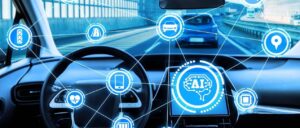15 PRACTICAL AND VIABLE AI BUSINESS IDEAS
Companies around the world are harnessing AI to streamline operations, enhance customer experiences, and gain a competitive edge. From personalised e-commerce recommendations to predictive maintenance in industries, AI is transforming traditional business models and creating exciting new opportunities.
With AI solutions becoming more accessible and practical, businesses of all sizes now leverage technology to boost efficiency, improve decision-making, and unlock untapped potential.
This article explores 15 practical and viable AI business ideas that will shape the future of commerce, offering insights into how AI can revolutionise organisations.
1. AI-Powered Chatbots:
Develop intelligent chatbots for businesses to automate customer service, provide instant responses, and improve user engagement.
Businesses are continually seeking innovative solutions to enhance their customer service experience. One of the most practical and viable applications of artificial intelligence (AI) in this realm will be the use of AI-powered chatbots. These virtual assistants are transforming the way businesses interact with their customers, offering a range of benefits that can drive efficiency and improve satisfaction.
Understanding AI-Powered Chatbots
AI-powered chatbots are software applications that use natural language processing (NLP) and machine learning algorithms to engage in conversations with users. Unlike traditional chatbots that rely on pre-defined scripts, AI chatbots can understand context, learn from interactions, and provide more relevant and personalised responses. This advanced capability enables them to handle a variety of tasks, from answering frequently asked questions to assisting in complex customer service queries.
Benefits of AI-Powered Chatbots
- 24/7 Availability: One of the most significant advantages of AI chatbots is their ability to operate around the clock. This means businesses can provide immediate assistance to customers at any time, enhancing user satisfaction and reducing wait times.
- Cost-Effectiveness: Implementing AI chatbots can lead to significant cost savings for businesses. By automating routine inquiries and support tasks, companies can reduce the need for large customer service teams, allowing human agents to focus on more complex issues that require personal attention.
- Improved Customer Engagement: AI chatbots can engage customers in real-time, offering personalised recommendations based on their previous interactions. This tailored approach not only enhances the customer experience but also encourages customer loyalty.
- Data Collection and Analysis: Chatbots can gather valuable data on customer preferences, behaviours, and pain points during interactions. This information can be analysed to identify trends and improve products or services, thereby driving business growth.
- Scalability: As businesses grow, so do their customer service demands. AI chatbots can easily scale to handle increased volumes of inquiries without the need for substantial additional resources.
Practical Applications in Business
AI-powered chatbots have a wide range of applications across various industries:
- E-Commerce: Online retailers use chatbots to assist customers with product searches, order tracking, and personalised recommendations, ultimately boosting sales and enhancing user experience.
- Banking and Finance: Financial institutions employ chatbots for handling routine queries, account management, and transaction alerts, providing customers with instant access to information while ensuring security.
- Healthcare: AI chatbots can help patients schedule appointments, receive medication reminders, and answer health-related inquiries, streamlining administrative tasks for healthcare providers.
- Travel and Hospitality: Travel companies utilise chatbots to assist with bookings, provide travel information, and offer support during trips, enhancing customer service while reducing operational costs.
2. Personalized E-commerce Recommendations:
Create an AI-driven platform that analyzes customer behavior to offer personalized product recommendations, enhancing the shopping experience.
One of the most effective strategies emerging from the realm of artificial intelligence (AI) is the implementation of personalised e-commerce recommendations. This approach not only enhances the shopping experience but will also drives sales and fosters customer loyalty.
Understanding Personalised Recommendations
Personalised e-commerce recommendations use AI algorithms and data analytics to analyse consumer behaviour and preferences.
By examining past purchases, browsing history, and even demographic information, businesses can tailor product suggestions to meet the unique needs of each customer.
This level of personalisation transforms the shopping journey from a generic experience into a highly tailored one, encouraging customers to engage more deeply with the brand.
The Importance of Personalisation in E-Commerce
- Enhanced Customer Experience: Personalised recommendations create a more enjoyable shopping experience. Customers are presented with products that align with their interests, making it easier for them to find what they are looking for without sifting through countless irrelevant items.
- Increased Conversion Rates: Research shows that personalised recommendations significantly boost conversion rates. When customers are shown products tailored to their preferences, they are more likely to make a purchase, leading to higher sales figures for businesses.
- Improved Customer Retention: By offering a personalised experience, businesses can foster deeper connections with their customers. This leads to increased loyalty, as customers are more likely to return to a brand that understands and caters to their individual needs.
- Optimised Marketing Strategies: AI-driven recommendations provide valuable insights into customer behaviour, allowing businesses to refine their marketing strategies. By understanding what products resonate with their audience, brands can create more targeted campaigns that drive engagement.
Practical Applications in E-Commerce
Personalised recommendations can be implemented in various ways across e-commerce platforms:
- Product Recommendations: Based on a customer’s browsing and purchase history, e-commerce sites can suggest related or complementary products. For example, if a customer purchases a camera, they might receive recommendations for lenses, tripods, and camera bags.
- Email Marketing: AI can help personalise email campaigns by suggesting products that align with individual customer preferences. For instance, a customer who frequently purchases fitness gear might receive recommendations for the latest sportswear or accessories.
- Dynamic Landing Pages: E-commerce websites can use AI to create personalised landing pages that showcase products tailored to each visitor. This ensures that customers see items relevant to their interests as soon as they arrive on the site.
- Search Functionality: AI-enhanced search engines can provide personalised results based on user behaviour, making it easier for customers to discover products they might not have found otherwise.
Challenges and Considerations
While the benefits of personalised recommendations are substantial, businesses must also be mindful of certain challenges:
- Data Privacy: With increasing concerns over data privacy, companies must ensure they handle customer information responsibly and transparently. Implementing clear privacy policies and obtaining consent for data usage is essential.
- Algorithm Bias: AI algorithms can sometimes reinforce existing biases if not carefully monitored. Businesses must regularly assess their recommendation systems to ensure fairness and accuracy in the suggestions they provide.
- Over-Personalisation: While personalisation enhances the customer experience, too much personalisation can feel intrusive. Striking the right balance is crucial to maintaining a positive relationship with customers.
AI BUSINESS IDEAS
3. AI-Based Content Creation:
Build a tool that uses natural language processing to generate high-quality written content for blogs, marketing materials, and social media.
Businesses constantly seek innovative ways to engage their audiences and stand out in a crowded marketplace.
One of the most promising advancements in this arena is AI-based content creation. Harnessing the power of artificial intelligence, businesses can streamline their content production processes, enhance creativity, and deliver personalised experiences to their customers.
Understanding AI-Based Content Creation
AI-based content creation refers to the use of artificial intelligence technologies, including natural language processing (NLP) and machine learning, to generate, curate, and optimise content.
This innovative approach will allow businesses to create high-quality written, visual, and audio content with minimal human intervention, enabling them to keep pace with the demands of their audiences.
The Benefits of AI-Based Content Creation
- Increased Efficiency: One of the most significant advantages of AI content creation is its ability to produce content at an unprecedented speed. AI tools can generate articles, blogs, social media posts, and more in a fraction of the time it would take a human writer. This efficiency allows businesses to maintain a consistent content output, keeping their audiences engaged and informed.
- Cost-Effectiveness: Employing AI for content creation can lead to substantial cost savings. By reducing the need for extensive content teams, businesses can allocate resources more efficiently, directing funds towards other areas such as marketing and product development.
- Enhanced Personalisation: AI algorithms can analyse user data to create highly personalised content tailored to individual preferences. This level of personalisation can significantly enhance user engagement, as customers are more likely to resonate with content that speaks directly to their interests and needs.
- Improved SEO Performance: AI tools can optimise content for search engines by analysing trends, keywords, and user behaviour. This ensures that businesses can create content that ranks higher on search engine results pages (SERPs), driving organic traffic to their websites.
- Data-Driven Insights: AI can provide valuable insights into content performance, helping businesses understand what resonates with their audience. By analysing metrics such as engagement rates and conversion statistics, companies can refine their content strategies to maximise impact.
Practical Applications of AI-Based Content Creation
AI-based content creation can be applied across various formats and platforms, including:
- Blog Posts and Articles: AI writing tools can assist in generating informative blog posts and articles that cater to specific topics and audiences, helping businesses maintain a robust online presence.
- Social Media Content: AI can help businesses curate and schedule social media posts that align with audience preferences and trending topics, ensuring they remain relevant in real-time conversations.
- Video Scripts: AI technology can be used to draft scripts for video content, ensuring that the messaging is clear and engaging, thus improving the overall quality of video marketing efforts.
- Email Marketing: AI-driven content creation tools can generate personalised email campaigns based on user data, increasing open rates and engagement.
Challenges and Considerations
While the advantages of AI-based content creation are significant, businesses must also navigate certain challenges:
- Quality Control: Although AI can generate content quickly, the quality may not always meet human standards. Businesses should implement robust quality control measures to ensure the content aligns with their brand voice and values.
- Lack of Human Touch: AI-generated content may sometimes lack the emotional depth and creativity that human writers bring to the table. Finding a balance between AI efficiency and human creativity is crucial for maintaining authenticity.
- Dependence on Technology: Over-reliance on AI tools can lead to a reduction in human creativity and critical thinking. Businesses must ensure that their teams remain engaged in the content creation process to foster innovative ideas.
4. Smart Inventory Management:
Develop an AI system that helps businesses manage inventory by predicting demand, optimizing stock levels, and reducing waste.
Traditional inventory management methods often fall short, leading to overstocking, stockouts, and lost sales. However, with the advent of artificial intelligence (AI), businesses will have access to innovative solutions that streamline inventory processes. Smart inventory management is emerging as one of the most practical and viable AI applications for businesses looking to enhance their supply chain efficiency.
Understanding Smart Inventory Management
Smart inventory management involves using AI algorithms, machine learning, and data analytics to optimise inventory levels, forecast demand, and automate replenishment processes. By analysing historical data, market trends, and consumer behaviour, AI-powered systems can provide valuable insights that help businesses make informed decisions about their inventory.
The Benefits of Smart Inventory Management
- Improved Demand Forecasting: AI can analyse vast amounts of data to predict future demand accurately. By considering various factors such as seasonality, market trends, and promotional activities, businesses can align their inventory levels with expected sales, reducing the risk of overstocking or stockouts.
- Enhanced Efficiency: Smart inventory management systems automate repetitive tasks, such as order processing and stock tracking. This not only saves time but also reduces human error, allowing staff to focus on more strategic activities that drive business growth.
- Cost Reduction: By optimising inventory levels, businesses can significantly reduce holding costs, including warehousing and spoilage expenses. AI-driven systems ensure that the right amount of stock is maintained, minimising waste and maximising profitability.
- Real-Time Visibility: AI technologies provide real-time insights into inventory levels, enabling businesses to track stock across multiple locations seamlessly. This visibility facilitates better decision-making and ensures that businesses can respond quickly to changing market conditions.
- Increased Customer Satisfaction: By maintaining optimal inventory levels and reducing stockouts, businesses can improve their service levels. Customers are more likely to find the products they want when they need them, enhancing their overall shopping experience and encouraging repeat purchases.
Practical Applications of Smart Inventory Management
Smart inventory management can be applied in various sectors, including:
- Retail: Retailers use AI to monitor sales patterns and adjust inventory levels accordingly. This ensures that popular items are always in stock while minimising excess inventory on less popular products.
- E-commerce: Online businesses rely on smart inventory management to handle fluctuating demand during peak seasons, such as holidays or sales events. AI can predict which items will be popular and ensure adequate stock levels are maintained.
- Manufacturing: Manufacturers can utilise AI to manage raw materials and component inventories effectively. By forecasting production needs, businesses can optimise their supply chains and avoid production delays.
- Healthcare: In the healthcare sector, AI-driven inventory management can track medical supplies and pharmaceuticals, ensuring that essential items are always available while minimising waste.
Challenges and Considerations
While the benefits of smart inventory management are significant, businesses must also consider certain challenges:
- Data Quality: The effectiveness of AI-driven inventory management relies heavily on the quality of the data being analysed. Businesses must ensure that their data is accurate, comprehensive, and up to date.
- Integration with Existing Systems: Implementing AI solutions may require integration with existing inventory management systems. Businesses must ensure that their infrastructure can support new technologies and that staff are adequately trained to use them.
- Cost of Implementation: While AI can lead to long-term savings, the initial investment in technology and training can be significant. Businesses must weigh these costs against the expected benefits to determine the feasibility of implementation.
5. AI in Healthcare Diagnostics:
Create a software solution that uses AI algorithms to analyze medical data and assist healthcare professionals in diagnosing diseases more accurately.
The healthcare industry is undergoing a transformative shift, driven by the integration of artificial intelligence (AI) into various aspects of patient care. Among its many applications, AI in healthcare diagnostics stands out as a particularly promising area, offering the potential to enhance accuracy, speed, and accessibility in diagnosing medical conditions.
As the demand for efficient and effective healthcare solutions continues to grow, AI is emerging as a vital tool for medical professionals worldwide.
Understanding AI in Healthcare Diagnostics
AI in healthcare diagnostics involves using machine learning algorithms, deep learning, and natural language processing to analyse medical data and assist in diagnosing diseases.
By processing vast amounts of information from medical images, patient records, and clinical studies, AI can help healthcare providers make more informed decisions and improve patient outcomes.
The Benefits of AI in Healthcare Diagnostics
- Enhanced Accuracy: AI algorithms are designed to learn from large datasets, enabling them to identify patterns and anomalies that may be difficult for human practitioners to detect. This increased accuracy can lead to earlier and more precise diagnoses, ultimately improving patient care.
- Speed of Diagnosis: In many cases, time is of the essence when it comes to diagnosing medical conditions. AI can analyse medical images and data significantly faster than human professionals, leading to quicker diagnoses and timely treatment decisions that can save lives.
- Access to Expertise: AI-powered diagnostic tools can democratise access to healthcare by providing expert-level insights in areas where specialist knowledge may be scarce. This is particularly beneficial for rural or underserved communities, where access to healthcare professionals can be limited.
- Predictive Analytics: AI can analyse historical patient data to identify trends and predict future health outcomes. This capability allows healthcare providers to take proactive measures in managing chronic diseases and preventing potential complications.
- Cost Efficiency: By streamlining the diagnostic process and reducing the likelihood of misdiagnoses, AI can help healthcare organisations lower costs. This efficiency can free up resources for other critical areas of patient care.
Practical Applications of AI in Healthcare Diagnostics
AI is being applied in various ways across the healthcare landscape, including:
- Medical Imaging: AI algorithms are increasingly used to analyse medical images, such as X-rays, MRIs, and CT scans. These tools can detect conditions like tumours, fractures, and other anomalies with remarkable accuracy, aiding radiologists in their assessments.
- Pathology: In pathology, AI can assist in analysing tissue samples to identify cancerous cells and other diseases. By automating the analysis process, AI can improve the speed and accuracy of diagnoses.
- Genomic Analysis: AI is playing a pivotal role in genomics by analysing genetic data to identify mutations and predispositions to certain diseases. This information can guide personalised treatment plans tailored to individual patients.
- Clinical Decision Support: AI can enhance clinical decision-making by providing healthcare professionals with evidence-based recommendations based on patient data and the latest research findings.
Challenges and Considerations
While the potential of AI in healthcare diagnostics is immense, there are also challenges to address:
- Data Privacy and Security: The sensitive nature of healthcare data raises concerns about privacy and security. Healthcare providers must ensure that patient information is protected and that AI systems comply with regulations such as GDPR and HIPAA.
- Integration with Existing Systems: Implementing AI solutions may require significant changes to existing healthcare infrastructure. Successful integration with electronic health records (EHR) and other systems is essential for maximising the benefits of AI.
- Bias in AI Algorithms: AI systems are only as good as the data they are trained on. If the training data is biased or not representative, the AI can produce skewed results. Continuous monitoring and refining of AI algorithms are necessary to mitigate this risk
6. Predictive Maintenance for Industries:
Offer an AI service that analyzes equipment data to predict failures and schedule maintenance, reducing downtime and costs for manufacturers.
In an era where efficiency and cost-effectiveness are paramount, industries are increasingly turning to artificial intelligence (AI) to enhance their operational strategies. One of the most impactful applications of AI is in predictive maintenance, a proactive approach that leverages advanced algorithms and data analytics to anticipate equipment failures before they occur. This innovative strategy not only minimises downtime but also optimises resource allocation, making it one of the most practical and viable AI applications for modern businesses.
Understanding AI Predictive Maintenance
Predictive maintenance refers to the use of AI technologies to monitor equipment and machinery, analysing data to predict when maintenance should be performed. By employing machine learning algorithms, AI systems can identify patterns and anomalies in equipment behaviour, enabling businesses to schedule maintenance activities at the most opportune times.
The Benefits of AI Predictive Maintenance
- Reduced Downtime: One of the most significant advantages of predictive maintenance is its ability to reduce unplanned downtime. By predicting equipment failures before they happen, businesses can carry out maintenance during scheduled downtimes, ensuring that production processes remain uninterrupted.
- Cost Savings: By shifting from reactive to predictive maintenance, organisations can significantly reduce maintenance costs. Predictive maintenance helps avoid costly repairs and replacements by addressing potential issues early, saving businesses money in the long run.
- Extended Equipment Lifespan: Regular maintenance based on predictive insights helps prolong the lifespan of machinery and equipment. By ensuring that assets are well-maintained, businesses can maximise their return on investment and minimise capital expenditures on new equipment.
- Improved Safety: Equipment failures can pose safety risks to workers and the surrounding environment. Predictive maintenance helps mitigate these risks by ensuring that machinery is functioning correctly and efficiently, thereby enhancing workplace safety.
- Optimised Resource Management: AI-driven predictive maintenance provides insights that allow businesses to optimise their resource allocation. By understanding equipment usage patterns and maintenance needs, organisations can better manage their workforce and spare parts inventory.
Practical Applications of AI Predictive Maintenance
AI predictive maintenance is being implemented across various industries, including:
- Manufacturing: In manufacturing, AI systems monitor machinery performance and usage patterns, predicting failures and scheduling maintenance to minimise disruptions in production lines.
- Transportation: Fleet management companies utilise predictive maintenance to monitor vehicles, assessing performance data to schedule maintenance before issues arise, thereby reducing downtime and extending vehicle lifespan.
- Energy and Utilities: In the energy sector, predictive maintenance is crucial for managing power generation equipment and distribution networks. By predicting failures in turbines, transformers, and other critical components, companies can maintain service reliability and reduce operational costs.
- Healthcare: Medical equipment in hospitals and clinics can also benefit from predictive maintenance. By ensuring that diagnostic machines and other critical devices are well-maintained, healthcare providers can improve patient care and avoid equipment-related complications.
Challenges and Considerations
While the benefits of AI predictive maintenance are substantial, there are challenges to consider:
- Data Quality: The effectiveness of predictive maintenance relies heavily on the quality of the data being analysed. Inaccurate or incomplete data can lead to faulty predictions, making data collection and management essential.
- Integration with Existing Systems: Implementing AI predictive maintenance may require integration with existing maintenance management systems. Businesses must ensure that their infrastructure supports new technologies for maximum effectiveness.
- Initial Investment: While predictive maintenance can lead to long-term savings, the initial investment in AI technology and training can be considerable. Businesses must evaluate the potential return on investment when considering implementation.
7. Automated Financial Advising:
Build an AI platform that provides personalized financial advice, portfolio management, and investment recommendations based on user profiles.
Automated financial advising, powered by artificial intelligence (AI), has emerged as a transformative solution, offering personalised financial advice and investment strategies without the traditional barriers of high costs and accessibility. This innovative approach is one of the most practical and viable AI applications in the financial services industry.
Understanding Automated Financial Advising
Automated financial advising, often referred to as “robo-advising,” utilises AI algorithms to provide financial planning and investment management services. By analysing vast amounts of data, these systems can deliver tailored advice based on individual financial situations, goals, and risk tolerances. This democratisation of financial advising allows more people to access quality financial guidance, regardless of their economic background.
The Benefits of Automated Financial Advising
- Cost Efficiency: Traditional financial advisory services often come with high fees, making them inaccessible for many individuals and small businesses. Automated financial advising significantly reduces costs by automating many processes, allowing users to receive quality advice at a fraction of the price.
- Personalised Recommendations: AI-driven platforms analyse user data to provide customised investment strategies and financial advice. By taking into account individual circumstances, such as income, savings, and financial goals, automated advisors can offer tailored solutions that align with users’ specific needs.
- 24/7 Availability: Unlike traditional financial advisors, who may only be available during business hours, automated financial advising platforms are accessible around the clock. This flexibility allows users to manage their finances and seek advice whenever they need it, making financial planning more convenient.
- Data-Driven Insights: Automated advisors leverage big data and AI analytics to identify trends and opportunities in the financial markets. This data-driven approach helps users make informed investment decisions based on real-time market analysis and forecasts.
- Simplified User Experience: Many automated financial advising platforms feature intuitive user interfaces that simplify the process of investing and financial planning. Users can easily navigate the platform, track their investments, and adjust their strategies with minimal hassle.
Practical Applications of Automated Financial Advising
Automated financial advising is being utilised across various sectors, including:
- Personal Finance: Individuals use automated advisors to create personalised financial plans, manage investments, and save for future goals such as retirement, education, or major purchases.
- Small Businesses: Entrepreneurs can benefit from automated financial advising to manage cash flow, optimise investments, and plan for growth, allowing them to focus more on running their businesses.
- Wealth Management Firms: Many wealth management firms have begun incorporating automated advising tools to enhance their service offerings, providing clients with a combination of human expertise and automated insights.
- Investment Platforms: Robo-advisors have gained popularity among investors looking for low-cost, diversified portfolios. These platforms automatically manage users’ investments based on their risk preferences and financial goals.
Challenges and Considerations
While automated financial advising presents numerous advantages, there are also challenges to consider:
- Limited Personal Touch: Although automated advisors can provide tailored recommendations, they lack the human touch that some clients prefer. Building trust and rapport with clients can be more challenging in a purely digital environment.
- Data Security: The sensitive nature of financial information raises concerns about data privacy and security. Automated advising platforms must implement robust security measures to protect user data from breaches and cyber threats.
- Market Volatility: Automated advisors rely heavily on algorithms and historical data, which may not always account for sudden market changes or unprecedented events. Users must remain aware of the risks associated with investing.
8. AI-Powered Recruitment Tools:
Develop a recruitment platform that uses AI to screen resumes, match candidates with job descriptions, and predict candidate success.
AI-powered recruitment tools are emerging as a game-changer, providing organisations with the ability to streamline hiring, improve candidate experience, and ultimately secure the best talent. This technology will not only simplify the recruitment journey but also enable companies to make data-driven decisions, making it one of the most practical and viable applications of AI in the business landscape.
Understanding AI-Powered Recruitment Tools
AI-powered recruitment tool leverage will artificial intelligence and machine learning algorithms to assist in various stages of the hiring process. From sourcing candidates to screening resumes and conducting interviews, these tools analyse vast amounts of data to identify the most suitable candidates for specific roles. By automating repetitive tasks, HR professionals can focus on strategic activities that add value to the organisation.
The Benefits of AI-Powered Recruitment Tools
- Enhanced Efficiency: Traditional recruitment methods can be time-consuming and labour-intensive. AI tools streamline the hiring process by automating tasks such as resume screening, scheduling interviews, and sending follow-up communications, significantly reducing the time taken to fill vacancies.
- Improved Candidate Matching: AI algorithms analyse resumes and job descriptions to identify the best matches based on skills, experience, and qualifications. This data-driven approach reduces the risk of bias and helps employers find candidates who align closely with their organisational needs.
- Data-Driven Insights: AI-powered recruitment tools generate valuable analytics that provide insights into the hiring process. Employers can track key metrics such as time-to-hire, candidate sources, and applicant demographics, enabling them to refine their recruitment strategies continuously.
- Better Candidate Experience: By automating communication and providing timely updates, AI tools enhance the candidate experience. This improved interaction can lead to higher engagement and satisfaction levels among job seekers, helping companies build a positive employer brand.
- Reduction of Bias: AI can help reduce unconscious bias in the recruitment process by focusing solely on candidate qualifications and performance metrics rather than demographic factors. This promotes diversity and inclusion in hiring, leading to a more varied workforce.
Practical Applications of AI-Powered Recruitment Tools
AI-powered recruitment tools are being utilised in various ways across different sectors:
- Resume Screening: These tools can automatically filter resumes based on predetermined criteria, allowing recruiters to quickly identify qualified candidates without manually sifting through hundreds of applications.
- Chatbots for Initial Interactions: AI chatbots can engage with candidates in real-time, answering common questions and pre-screening applicants through standardised queries, thereby freeing up human resources for more complex interactions.
- Predictive Analytics: Some AI tools analyse past hiring data to predict future hiring needs, allowing organisations to proactively source talent and plan their recruitment strategies accordingly.
- Video Interviewing: AI-driven video interviewing platforms can analyse candidates’ facial expressions, speech patterns, and responses to assess their suitability for the role. This can provide valuable insights into candidate fit beyond traditional interviews.
Challenges and Considerations
Despite the numerous benefits, there are challenges associated with AI-powered recruitment tools that organisations must consider:
- Data Privacy Concerns: The use of AI in recruitment often involves collecting and processing sensitive personal information. Companies must ensure compliance with data protection regulations and implement robust security measures to protect candidate data.
- Dependence on Quality Data: The effectiveness of AI algorithms relies heavily on the quality and quantity of data. Poorly designed systems or biased data can lead to inaccurate assessments and perpetuate existing biases in hiring.
- Need for Human Oversight: While AI can assist in the recruitment process, human judgement remains essential. Recruiters should review AI-generated insights and make final hiring decisions, ensuring that the process remains holistic and empathetic.
9. Smart Home Automation Systems:
Create AI solutions for home automation that learn user preferences to optimize energy usage, security, and comfort.
As technology continues to evolve, the demand for smart home solutions is skyrocketing, presenting a promising business opportunity for entrepreneurs and established companies alike.
AI-powered smart home automation systems are not just transforming the way we live; they are revolutionising the home management industry. By harnessing the power of artificial intelligence, businesses can tap into a lucrative market that promises convenience, security, and energy efficiency for homeowners.
The Business Landscape of Smart Home Automation
The smart home market is projected to grow significantly, driven by consumer demand for increased comfort, security, and sustainability.
According to industry reports, the global smart home market is expected to reach over £150 billion by 2025. This growth is fuelled by the rising adoption of IoT (Internet of Things) devices and the increasing integration of AI technologies in everyday life. As a result, businesses have a unique opportunity to enter this expanding market with innovative smart home solutions.
Key Business Opportunities in Smart Home Automation
- Smart Device Development: Companies can create and manufacture a range of smart devices, such as smart thermostats, lighting systems, security cameras, and appliances. By integrating AI capabilities, these products can learn user preferences, optimise performance, and provide enhanced functionalities, making them attractive to tech-savvy consumers.
- Customised Smart Home Solutions: Businesses can offer tailored smart home solutions that cater to individual customer needs. This could involve conducting assessments to design integrated systems that manage lighting, heating, security, and entertainment in a seamless manner, enhancing overall user experience.
- Installation and Maintenance Services: As smart home technology becomes more complex, the demand for professional installation and ongoing maintenance services will grow. Companies can establish a niche in providing expert installation, troubleshooting, and support services to ensure that systems operate efficiently and effectively.
- Smart Home Security Solutions: With growing concerns about home security, businesses can focus on developing AI-driven security systems that provide real-time monitoring, alerts, and remote access capabilities. The integration of facial recognition and motion detection technologies can offer an additional layer of security that consumers find appealing.
- Energy Management Solutions: Businesses can create AI-powered energy management systems that help homeowners monitor and optimise their energy usage. These solutions can analyse consumption patterns and recommend strategies for reducing energy costs, aligning with the increasing consumer focus on sustainability.
Advantages of Entering the Smart Home Market
- Growing Consumer Demand: With the rise in remote work and lifestyle changes, consumers are increasingly seeking solutions that enhance convenience and security in their homes. Smart home automation systems provide a compelling answer to this demand.
- Potential for Recurring Revenue: Subscription models for smart home services, such as security monitoring or energy management, can create a steady stream of recurring revenue for businesses, ensuring long-term profitability.
- Cross-Selling Opportunities: Businesses can leverage existing customer relationships to cross-sell smart home products and services, creating additional revenue streams and enhancing customer loyalty.
- Innovation and Brand Differentiation: By investing in AI technologies and smart home solutions, businesses can position themselves as innovators in the industry, differentiating their offerings in a competitive market.
Challenges to Consider
While the potential for success in the smart home automation sector is significant, there are challenges that businesses must navigate:
- High Competition: The smart home market is becoming increasingly competitive, with numerous players vying for consumer attention. Businesses must invest in marketing and branding to differentiate their products and services.
- Consumer Education: Many consumers may be unfamiliar with smart home technologies. Businesses will need to invest in educational resources and marketing campaigns to inform potential customers about the benefits and functionalities of their offerings.
- Privacy and Security Concerns: As smart home systems collect and transmit personal data, businesses must prioritise data security and privacy to build consumer trust and comply with regulations.
Related topics:
- Top 10 POWERFUL AI CHATBOT BUILDER
- How AI is Transforming Urban Life and Smart Cities: Enhancing Efficiency and Livability
- AI for Interior Design: Transforming Spaces with Technology
- Difference Between AI and Machine Learning: Understanding Key Concepts
10. AI in Agriculture:
Develop AI tools for farmers that analyze soil health, predict weather patterns, and optimize planting and harvesting schedules to increase crop yields.
Traditional farming methods are often insufficient to optimise yield while ensuring sustainability. Enter artificial intelligence (AI)—a transformative technology that is revolutionising agriculture. By integrating AI into farming practices, businesses can enhance productivity, reduce waste, and contribute to food security, making AI in agriculture one of the most viable business ideas of our time.
The Current Landscape of Agriculture
Agriculture is undergoing a significant transformation, driven by technological advancements. Farmers are now expected to produce more with fewer resources, which necessitates innovative solutions. According to recent reports, the global market for AI in agriculture is projected to reach £2.3 billion by 2026, reflecting the growing adoption of smart farming technologies. This surge presents a substantial opportunity for businesses looking to invest in AI-driven agricultural solutions.
Key Applications of AI in Agriculture
- Precision Farming: AI enables farmers to analyse vast amounts of data collected from various sources, such as sensors, drones, and satellite imagery. This data can help optimise planting patterns, irrigation schedules, and fertiliser application, leading to increased crop yields and reduced resource waste.
- Crop Monitoring and Disease Detection: Machine learning algorithms can analyse images captured by drones or cameras to identify early signs of disease, pest infestations, or nutrient deficiencies. By addressing these issues promptly, farmers can mitigate crop loss and improve overall health.
- Predictive Analytics: AI can forecast weather patterns, soil conditions, and crop performance, allowing farmers to make informed decisions about planting and harvesting. This predictive capability helps in minimising risks and maximising productivity.
- Automated Machinery: Autonomous tractors and robotic harvesters are becoming increasingly common in modern agriculture. These AI-powered machines can operate without human intervention, performing tasks such as ploughing, planting, and harvesting more efficiently than traditional methods.
- Supply Chain Optimisation: AI can enhance the agricultural supply chain by predicting demand, optimising routes for delivery, and managing inventory. This efficiency not only reduces costs but also ensures that fresh produce reaches consumers in a timely manner.
Advantages of AI in Agriculture
- Increased Efficiency: By automating tasks and optimising resource usage, AI can significantly enhance the efficiency of agricultural operations. Farmers can achieve more with less, reducing their overall costs.
- Sustainability: AI technologies promote sustainable farming practices by minimising waste and maximising resource utilisation. This aligns with the growing consumer demand for environmentally friendly products and practices.
- Enhanced Decision-Making: With access to real-time data and predictive insights, farmers can make more informed decisions, reducing risks and improving overall crop management.
- Improved Crop Quality: By leveraging AI for monitoring and disease detection, farmers can enhance the quality of their produce, meeting market demands for higher standards.
Business Opportunities in AI-Driven Agriculture
The integration of AI into agriculture opens up numerous business opportunities:
- AI Software Development: Companies can create software solutions that utilise machine learning and data analytics to assist farmers in managing their operations more effectively.
- Hardware Manufacturing: There is a growing demand for drones, sensors, and automated machinery equipped with AI capabilities. Businesses can capitalise on this demand by developing and manufacturing these technologies.
- Consultancy Services: Providing expertise in AI implementation and data analytics can help farmers transition to smarter agricultural practices, creating a niche market for consultancy services.
- Data Analytics Services: Offering data analysis services to farmers can help them make sense of the vast amounts of data collected, providing actionable insights for better decision-making.
Challenges to Consider
While the potential for AI in agriculture is immense, there are challenges that businesses must navigate:
- High Initial Investment: Implementing AI technologies can require significant upfront costs. Businesses must consider financing options to make these solutions accessible to farmers.
- Data Privacy and Security: As farming operations become more connected, data privacy and security concerns arise. Companies must prioritise robust cybersecurity measures to protect sensitive information.
- Adoption Barriers: Some farmers may be hesitant to adopt new technologies due to a lack of understanding or fear of complexity. Education and training will be essential to overcoming these barriers.
11. Virtual Personal Assistants:
Create an AI-driven personal assistant application that helps users manage their schedules, reminders, and daily tasks efficiently.
One of the most practical and viable AI applications in business is the development and deployment of Virtual Personal Assistants (VPAs).
These intelligent systems not only streamline administrative tasks but also contribute to enhanced decision-making, allowing businesses to focus on growth and innovation.
The Rise of Virtual Personal Assistants
Virtual Personal Assistants have gained traction in recent years, driven by advancements in AI and natural language processing (NLP). These sophisticated tools can understand and respond to human language, enabling them to perform a variety of tasks, from scheduling appointments to managing emails and conducting research. According to industry reports, the global market for virtual assistants is projected to reach £12 billion by 2028, highlighting the immense potential for businesses to harness this technology.
Key Applications of Virtual Personal Assistants
- Administrative Support: VPAs can handle routine administrative tasks, such as managing calendars, scheduling meetings, and sending reminders. By automating these functions, businesses can free up valuable time for employees to focus on more strategic activities.
- Customer Service: VPAs can serve as the first point of contact for customer inquiries, providing instant responses and support. This capability enhances customer satisfaction and reduces the workload on human customer service representatives.
- Data Management: Virtual assistants can efficiently organise and analyse data, providing valuable insights that can inform business decisions. They can extract relevant information from documents, manage databases, and generate reports with minimal human intervention.
- Task Automation: VPAs can automate repetitive tasks, such as sending follow-up emails or generating invoices. This automation not only saves time but also reduces the likelihood of human error.
- Personalised Recommendations: By analysing user behaviour and preferences, VPAs can provide tailored recommendations, whether it’s for products, services, or content, thereby enhancing the user experience.
Benefits of Implementing Virtual Personal Assistants
- Increased Productivity: By automating routine tasks, businesses can significantly enhance productivity levels. Employees can dedicate more time to high-value work, resulting in better overall performance.
- Cost Efficiency: Implementing VPAs can lead to substantial cost savings. Businesses can reduce their reliance on administrative staff and improve operational efficiency, ultimately lowering overhead costs.
- 24/7 Availability: Unlike human employees, virtual assistants can operate around the clock, providing support and services at any time. This capability is particularly valuable for businesses with a global clientele, ensuring that customer inquiries are addressed promptly.
- Enhanced Customer Experience: With instant responses and personalised service, VPAs can improve the overall customer experience, fostering loyalty and encouraging repeat business.
Business Opportunities in the Virtual Assistant Market
The growing demand for Virtual Personal Assistants presents numerous business opportunities:
- VPA Development: Entrepreneurs can develop customised virtual assistant software tailored to specific industries or business needs. This could involve creating specialised VPAs for healthcare, finance, or retail sectors.
- Integration Services: Businesses can offer services to integrate VPAs with existing software and platforms, ensuring seamless functionality and maximising their potential.
- Consultancy: Providing consultancy services on the implementation and optimisation of VPAs can help businesses leverage this technology effectively, ensuring they achieve maximum return on investment.
- Training and Support: Companies can establish training programmes for businesses looking to adopt VPAs, guiding them through the integration process and offering ongoing support.
Challenges to Consider
While the potential for Virtual Personal Assistants is immense, there are challenges that businesses must navigate:
- Integration Complexities: Integrating VPAs with existing systems can be complex, requiring careful planning and execution to ensure compatibility.
- Data Privacy and Security: As VPAs handle sensitive information, businesses must prioritise data security measures to protect customer and company data.
- User Acceptance: Some employees may resist the adoption of virtual assistants due to fears of job displacement or a lack of familiarity with the technology. Addressing these concerns through education and training is essential for successful implementation.
12. Sentiment Analysis Tools:
Offer businesses AI tools to analyze customer feedback and social media interactions, providing insights into public sentiment about their brand.
These tools allow businesses to analyse large volumes of text, such as social media posts, customer reviews, and survey responses, to gauge public opinion and emotional tone. By leveraging AI for sentiment analysis, companies can make data-driven decisions, enhance customer experiences, and improve brand perception.
What Are Sentiment Analysis Tools?
Sentiment analysis tools use AI, particularly natural language processing (NLP) and machine learning algorithms, to evaluate and categorise emotions expressed in text.
These tools identify whether a piece of content conveys a positive, negative, or neutral sentiment, providing businesses with valuable insights into how consumers feel about their products, services, or brand.
By automating this process, companies can quickly assess public opinion across vast datasets that would be otherwise impossible to manage manually.
Key Applications of Sentiment Analysis in Business
- Customer Feedback Analysis: Sentiment analysis tools can process customer reviews and feedback to identify common complaints, praises, and suggestions. By understanding what customers like or dislike, businesses can adjust their offerings, improve service, and address any issues proactively.
- Social Media Monitoring: Social media platforms are rich with consumer sentiment, but tracking all conversations is a daunting task. Sentiment analysis tools allow businesses to monitor brand mentions and discussions in real time, enabling them to respond swiftly to customer concerns or capitalise on positive trends.
- Market Research: Companies can use sentiment analysis to gauge public opinion on competitors, industry trends, or new product launches. This valuable insight helps businesses stay ahead of the curve and adapt their strategies accordingly.
- Brand Management: Understanding how people feel about a brand can help businesses manage their reputation more effectively. Sentiment analysis can alert companies to negative sentiment, enabling them to take corrective action before it escalates.
- Product Development: Analysing customer sentiment about specific product features or innovations allows businesses to refine their offerings based on consumer preferences, leading to better products that resonate with the market.
Benefits of Sentiment Analysis Tools
- Actionable Insights: Sentiment analysis provides businesses with clear, actionable insights into how their audience feels. These insights can be used to inform decision-making, from product development to marketing strategies.
- Real-Time Feedback: Traditional market research methods can take time, but AI-powered sentiment analysis tools offer real-time data. This allows businesses to respond to consumer sentiment as it evolves, ensuring timely and relevant actions.
- Improved Customer Experience: By understanding customer emotions, businesses can personalise their interactions, address concerns quickly, and provide better overall service, leading to increased customer satisfaction and loyalty.
- Competitive Advantage: Companies that can quickly assess market sentiment and adapt their strategies accordingly gain a competitive edge. Sentiment analysis tools offer a window into consumer preferences that competitors may not have, allowing businesses to act faster.
Business Opportunities in Sentiment Analysis
As the demand for AI-powered sentiment analysis grows, there are several business opportunities for entrepreneurs and companies to explore:
- Customised Sentiment Analysis Solutions: Developing sentiment analysis tools tailored to specific industries, such as retail, healthcare, or finance, can provide businesses with niche solutions that address their unique needs.
- Consultancy Services: Businesses may need help integrating sentiment analysis tools into their operations or interpreting the data these tools generate. Offering consultancy services to guide companies through these processes can be a lucrative opportunity.
- Sentiment Data as a Service: Providing sentiment data and insights to businesses that lack the resources to develop their own tools can be another revenue stream. Companies can pay for sentiment reports based on customer reviews, social media, and other data sources.
- Training and Support: With the increasing use of sentiment analysis tools, businesses will require training to use these tools effectively. Offering training programmes and support services can help companies maximise the value of their sentiment analysis investments.
Challenges in Sentiment Analysis
While sentiment analysis tools offer numerous advantages, businesses should also be aware of the challenges:
- Language Nuances: Understanding human emotion through text is complex, especially when dealing with sarcasm, slang, or context. AI tools may struggle with these nuances, leading to inaccurate sentiment classification in certain cases.
- Data Privacy: As businesses collect large amounts of data for sentiment analysis, ensuring compliance with data privacy regulations is critical. Protecting customer information should be a priority for any business using these tools.
- False Positives and Negatives: Sentiment analysis tools, while powerful, are not perfect. They may sometimes misclassify sentiment or miss important contextual information, so businesses must review and interpret the data carefully.
13. AI for Cybersecurity:
Develop AI-based cybersecurity solutions that monitor networks for threats, detect anomalies, and respond to attacks in real-time.
The growing sophistication of cyberattacks, coupled with the sheer volume of digital transactions and data, means traditional security measures are no longer enough. This is where AI for cybersecurity emerges as one of the most practical and viable AI-driven business solutions.
By integrating artificial intelligence into cybersecurity frameworks, companies can proactively identify threats, respond to incidents faster, and fortify their defences against evolving cyber risks.
What is AI for Cybersecurity?
AI for cybersecurity involves the use of machine learning, pattern recognition, and natural language processing (NLP) to detect, analyse, and counter cyber threats.
Unlike traditional security systems that rely on predefined rules, AI-based systems learn from data, adapt to new threats, and can even anticipate attacks before they occur.
This intelligence allows for a more dynamic and responsive approach to security, helping businesses stay ahead of cybercriminals.
Key Applications of AI in Cybersecurity
- Threat Detection and Prevention: AI can quickly sift through vast amounts of data to identify patterns and anomalies that might signal a cyberattack. By recognising unusual behaviour in network traffic, AI systems can alert security teams to potential breaches before they escalate.
- Incident Response: In the event of a breach, AI-powered systems can act in real-time to contain the damage. Automated responses can include isolating infected systems, blocking suspicious users, or even neutralising attacks as they happen.
- Fraud Detection: In industries like banking and e-commerce, AI can monitor transactions and flag suspicious activity. By learning the normal behaviour of users and systems, AI tools can detect deviations that indicate fraud, reducing the risk of financial loss.
- Vulnerability Management: AI can analyse software and systems for vulnerabilities and recommend patches or updates. This proactive approach helps businesses close security gaps before they are exploited by attackers.
- Phishing Detection: AI tools can analyse email content, URLs, and sender information to detect phishing attempts. As phishing techniques become more sophisticated, AI can quickly adapt to new methods and protect users from malicious links and attachments.
- User Authentication: AI is enhancing biometric security measures, such as facial recognition, fingerprint scanning, and voice recognition. These tools add an extra layer of security, making it harder for unauthorised users to access sensitive information.
Benefits of AI-Powered Cybersecurity
- Faster Threat Detection: Traditional cybersecurity measures often rely on human intervention, which can lead to delayed responses. AI-powered systems operate in real-time, detecting and neutralising threats faster than any human team could manage.
- Proactive Security: AI doesn’t just respond to threats—it anticipates them. By learning from past attacks and adapting to new risks, AI helps businesses stay one step ahead of cybercriminals.
- Reduced Human Error: Human oversight is one of the weakest links in cybersecurity. AI can minimise the impact of human error by automating routine tasks and offering more accurate threat detection.
- Scalability: As businesses grow, so does the complexity of their security needs. AI-based systems can scale alongside the business, managing larger networks and more data without compromising effectiveness.
- Cost Efficiency: While the initial investment in AI for cybersecurity can be significant, the long-term savings from preventing data breaches, reducing downtime, and improving operational efficiency make it a cost-effective solution.
Business Opportunities in AI for Cybersecurity
With the rise in cyberattacks, businesses are increasingly looking for advanced solutions to protect their digital assets. This presents numerous opportunities in the cybersecurity market:
- AI Security Solutions Development: Entrepreneurs can create AI-driven cybersecurity software tailored to different industries, such as healthcare, finance, or retail, where data protection is paramount.
- Cybersecurity as a Service (CaaS): Offering AI-based cybersecurity services to businesses that lack the resources or expertise to manage their own security systems can be a profitable venture. This could include managed threat detection, incident response, and vulnerability management.
- Consultancy and Training: Many businesses are still in the early stages of AI adoption for cybersecurity. Providing consultancy services and training on how to integrate AI into existing security frameworks could fill a critical knowledge gap.
- AI-Driven Fraud Prevention Tools: Developing AI tools that specialise in detecting and preventing fraud in sectors like e-commerce, online banking, and insurance can offer significant value as online transactions continue to grow.
Challenges of Implementing AI in Cybersecurity
While AI offers substantial benefits, there are challenges to consider:
- High Implementation Costs: AI-powered cybersecurity systems can require significant investment, both in terms of financial resources and time for integration. Smaller businesses may find it challenging to adopt these systems without external support.
- Complexity of AI Systems: AI systems require substantial expertise to set up and manage. As the technology evolves, businesses may need to invest in training and hiring professionals with specialised knowledge in AI and cybersecurity.
- False Positives: AI systems can occasionally flag benign activity as malicious, leading to false positives. This can cause unnecessary disruptions to business operations and requires human oversight to refine AI algorithms.
- Data Privacy Concerns: AI systems often rely on large datasets to function effectively, which raises concerns about data privacy. Businesses must ensure that their AI systems comply with data protection regulations, such as GDPR, to avoid legal penalties.
14. Smart Transportation Solutions:
Create AI applications for logistics and transportation that optimize routes, reduce fuel consumption, and improve delivery efficiency.
As cities become more congested and the demand for efficient logistics and public transport systems increases, businesses and governments alike are looking for innovative ways to tackle these challenges.
One of the most practical and viable AI-powered business ideas is AI Smart Transportation Solutions. These advanced systems leverage artificial intelligence to streamline traffic management, optimise logistics, and enhance passenger experiences, ultimately reshaping the future of mobility.
What Are AI Smart Transportation Solutions?
AI Smart Transportation Solutions refer to the application of artificial intelligence to improve the safety, efficiency, and sustainability of transport systems. By integrating AI into public and private transport infrastructure, businesses can manage fleets, optimise routes, and reduce operational costs. AI-driven technologies include predictive analytics, machine learning, and computer vision, which enable smarter decision-making in real-time.
From autonomous vehicles to intelligent traffic management systems, AI is enabling a new era of transportation that is faster, safer, and more sustainable.
Key Applications of AI in Smart Transportation
- Autonomous Vehicles: AI plays a crucial role in the development of self-driving cars and trucks. Through machine learning algorithms and real-time data processing, these vehicles can navigate roads, detect obstacles, and make decisions without human intervention. This reduces human error, decreases the risk of accidents, and opens up possibilities for driverless taxi and delivery services.
- Optimised Traffic Management: AI can analyse traffic patterns in real-time and adjust traffic light timings to alleviate congestion. By predicting peak traffic hours and diverting traffic accordingly, AI systems reduce road congestion and minimise travel time, improving overall urban mobility.
- Smart Logistics: AI-driven platforms help logistics companies optimise delivery routes and schedules, cutting fuel consumption and reducing delivery times. Predictive maintenance tools, powered by AI, can also alert fleet operators when vehicles need repairs, reducing downtime and extending the life of the fleet.
- Public Transport Systems: AI can enhance the efficiency of public transportation by predicting passenger demand, optimising bus and train routes, and improving scheduling. AI can also be used to provide real-time updates to passengers, helping them plan their journeys better and reduce waiting times.
- Ride-Hailing Services: Platforms like Uber and Lyft already utilise AI to match passengers with drivers, estimate arrival times, and adjust pricing dynamically. These systems rely on AI to analyse data, optimise routes, and improve customer satisfaction.
- Predictive Maintenance for Vehicles: AI tools can monitor the condition of vehicles, identifying wear and tear before it leads to mechanical failure. This proactive maintenance approach not only extends the life of the vehicle but also reduces operational costs by preventing unexpected breakdowns.
- AI-Enabled Traffic Surveillance: AI-powered cameras and sensors can detect traffic violations, monitor road conditions, and enhance law enforcement. These systems reduce the need for manual surveillance and ensure road safety.
- Smart Parking Solutions: AI can assist drivers in finding available parking spaces in real-time, reducing the time spent searching for a spot and lowering emissions from idling vehicles. Some smart parking systems can even facilitate automated payments.
Benefits of AI Smart Transportation Solutions
- Improved Safety: AI enhances safety by reducing human error in both public and private transport systems. Autonomous vehicles, for instance, are equipped with sensors and algorithms that allow them to detect hazards and avoid collisions, making roads safer for everyone.
- Reduced Operational Costs: AI-driven optimisation of routes and schedules leads to reduced fuel consumption and lower operational costs for logistics and transport companies. Predictive maintenance further helps reduce costly repairs and downtime.
- Increased Efficiency: AI systems can analyse vast amounts of data in real-time, improving traffic flow, reducing congestion, and enhancing the overall efficiency of transport networks. Public transport systems can run more smoothly, and logistics companies can deliver goods faster and more reliably.
- Environmental Impact: By optimising routes and reducing idle times, AI Smart Transportation Solutions can significantly reduce carbon emissions.
Autonomous vehicles and smart traffic systems also contribute to the reduction of fuel consumption, helping businesses meet sustainability targets and promoting cleaner air in urban environments.
- Enhanced Customer Experience: For passengers, AI makes transportation more predictable and convenient. From real-time updates on traffic and public transport schedules to personalised route recommendations, AI-powered systems ensure a smoother travel experience.
- Scalability: AI systems can easily scale to accommodate growing populations and transport demands. As urban areas expand, AI-based transportation solutions can be integrated into existing infrastructure without the need for massive overhauls.
Business Opportunities in AI-Powered Transportation
With the growing emphasis on smart cities and sustainable transport, there are numerous business opportunities in AI-powered transportation solutions:
Autonomous Fleet Services: Startups and established companies alike can invest in developing autonomous delivery or taxi fleets, reducing the need for human drivers and operational inefficiencies.
- AI-Powered Logistics Platforms: Businesses can create AI-based software platforms that help logistics companies optimise their delivery routes, schedule maintenance, and reduce fuel consumption.
- Smart City Integration: AI solutions tailored for urban planners and governments can optimise public transport systems and traffic management, creating safer and more efficient cities.
- Ride-Sharing and Mobility Platforms: Entrepreneurs can develop AI-based ride-sharing services that offer smarter route matching, dynamic pricing, and enhanced passenger experiences.
- Smart Parking Solutions: AI-driven parking solutions can provide drivers with real-time information on parking availability and automate payment systems, reducing the hassle for both drivers and city planners.
- Traffic Management Consulting: Companies can offer AI-powered traffic optimisation services to cities and municipalities, helping reduce congestion and improve road safety.
Challenges of Implementing AI in Transportation
While the potential benefits are clear, there are challenges to implementing AI in transportation:
- High Initial Costs: Implementing AI systems, especially autonomous vehicles and smart traffic infrastructure, requires significant upfront investment in technology and infrastructure.
- Regulatory and Ethical Concerns: Governments and businesses need to address regulatory frameworks for autonomous vehicles and data privacy concerns surrounding AI-based surveillance systems.
- Public Acceptance: There is still hesitation from the public regarding the safety and reliability of autonomous vehicles and AI-powered systems, which can slow down widespread adoption.
- Data Security: AI systems that collect and process massive amounts of data are susceptible to cybersecurity risks, making robust security measures essential.
15. Customized Learning Platforms: Build an AI-driven educational platform that adapts learning materials to individual student needs, enhancing engagement and retention.
One of the most promising and viable AI-driven business ideas is the development of AI Customised Learning Platforms. These platforms harness the power of artificial intelligence to tailor educational experiences to individual learners, providing a personalised, efficient, and adaptive approach to education.
What Are AI Customised Learning Platforms?
AI customised learning platforms are digital systems that use artificial intelligence to personalise the learning experience for each user. By analysing a student’s strengths, weaknesses, learning pace, and preferences, the platform can create a tailored educational path. This level of customisation helps learners achieve their goals more efficiently while maintaining engagement and motivation.
AI-powered learning platforms offer personalised lesson plans, provide real-time feedback, and adapt dynamically to the learner’s progress. They are designed to cater to diverse learning styles and are widely applicable in schools, corporate training, and online education.
Key Features of AI Customised Learning Platforms
- Adaptive Learning Paths: AI systems analyse data on how users interact with content, allowing platforms to adjust the difficulty and type of material presented. This ensures that each learner is working on the most appropriate level, neither too challenging nor too easy.
- Personalised Feedback: Through real-time analysis, AI platforms can offer instant, constructive feedback tailored to the learner’s performance. Whether it’s an online course or in-company training, learners receive insights that help them understand areas needing improvement.
- Progress Tracking: AI algorithms continuously monitor learners’ progress, identifying patterns and predicting outcomes. Educators and learners can use this data to adjust study plans, address gaps in knowledge, and ensure continuous improvement.
- Content Recommendations: Much like how streaming services recommend media, AI learning platforms suggest relevant learning materials based on a learner’s interests, progress, and goals. This helps maintain engagement and improves the retention of knowledge.
- Natural Language Processing (NLP): AI can also facilitate better interaction between learners and platforms through natural language processing. This allows for chatbots, virtual tutors, or even voice-controlled learning assistants that help students through complex concepts or queries.
- Gamification: AI platforms can incorporate gamified elements, rewarding students for progress and making learning more engaging. Personalised challenges and rewards enhance motivation, making the educational process feel less like a chore.
- Time Management Tools: By predicting how long a student will take to complete tasks, AI platforms can help students plan their study time more effectively. They can also offer reminders, schedule optimisations, and even suggest break periods.
- Multimodal Learning Options: AI-based platforms can cater to different learning styles by offering diverse content formats—videos, text, quizzes, interactive exercises, and simulations—providing the learner with flexibility in how they absorb information.
Benefits of AI Customised Learning Platforms
- Personalised Learning Experience: One of the most significant advantages of AI in education is its ability to tailor learning paths. Each learner gets an experience specifically designed to meet their unique needs, which greatly enhances learning outcomes.
- Improved Engagement: Customised content keeps learners engaged by providing relevant and interesting material. Learners are more likely to stay motivated when the content is matched to their pace and interests.
- Scalability: AI customised learning platforms can scale to accommodate thousands of learners, offering personalised education to each individual without requiring additional teaching staff. This makes it especially valuable in large organisations or public education systems.
- Efficient Use of Resources: Teachers and trainers can use AI to handle administrative tasks and grading, freeing them up to focus on high-value activities like mentoring and providing additional support to learners who need it most.
- Data-Driven Insights: The real-time data collection and analysis capabilities of AI allow educators to understand learning trends and challenges. This data can be used to improve courses, identify struggling learners early, and offer timely interventions.
- Accessibility: AI learning platforms are available to anyone with an internet connection, breaking down geographic and economic barriers to education. This democratisation of learning allows individuals from all walks of life to access high-quality, personalised education.
Business Opportunities in AI Customised Learning Platforms
- Corporate Training Solutions: Many businesses need scalable training platforms for employee development. An AI-powered system can tailor training programmes based on employees’ job roles, career goals, and learning styles, improving productivity and retention.
- Online Education Platforms: Companies offering online courses can enhance their platforms with AI to create personalised learning experiences for students across a range of subjects, from academic topics to personal development skills.
- EdTech Startups: Startups focused on AI-driven education tools can tap into the growing market for personalised learning, creating specialised platforms that cater to specific educational sectors, such as K-12, higher education, or vocational training.
- Language Learning Platforms: AI customised learning platforms can be particularly effective in language learning, where personalised feedback and adaptive lessons are key to success.
- AI Tutoring and Mentorship Services: AI can complement human tutoring, offering virtual tutors or mentorship services that provide personalised academic support 24/7.
Challenges and Considerations
While AI customised learning platforms offer immense potential, there are challenges to consider:
- Data Privacy: Collecting and processing personal data requires robust security measures to protect learners’ privacy. Businesses will need to ensure they are compliant with data protection regulations.
- Access to Technology: Not all learners have the same level of access to devices and reliable internet connections, which can create disparities in learning opportunities.
- Teacher Involvement: While AI platforms automate many aspects of education, human teachers remain critical for guidance, support, and complex problem-solving. AI should be seen as a tool that complements, rather than replaces, human educators.


















